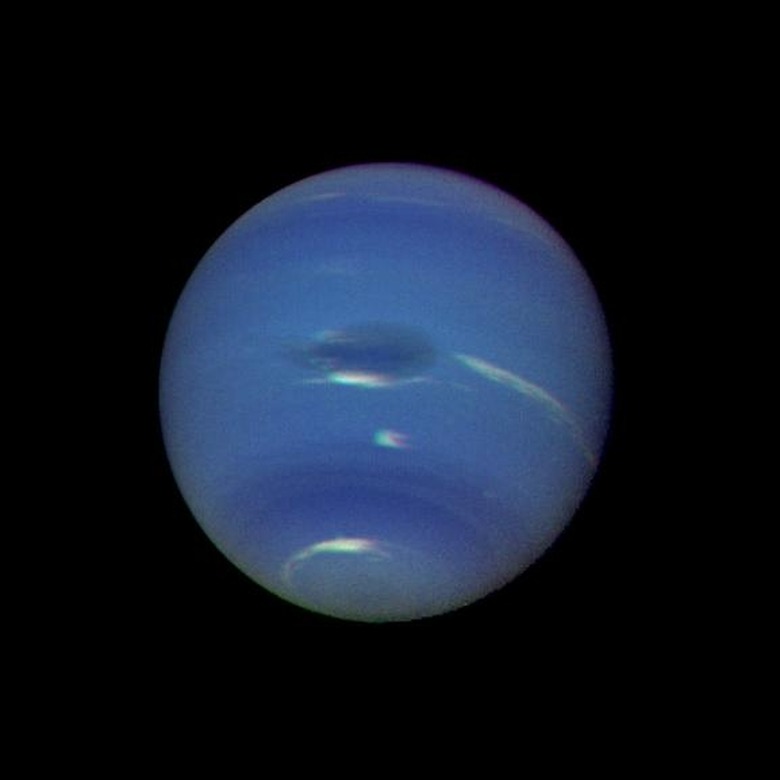Facts About The Planet Neptune
Invisible without a telescope, the planet Neptune was discovered in 1846 by Johann G. Galle, director of the Urania Observatory in Berlin, Germany. Mathematics predicted its location. Because the planet Uranus was not always in its predicted position, mathematicians calculated that the gravitational pull of a more distant planet was causing the anomaly.
Basics
Basics
At 30,775 miles in diameter, Neptune is the eighth and last planet of our solar system, now that Pluto has been demoted to planetoid status. It is about 2.7 billion miles away from the Sun, has a day lasting about 16 hours and orbits once every 165 years.
Description
Description
Named after the Roman god of the oceans because of its blue color, Neptune has no solid surface. Instead, its clouds of hydrogen, helium and methane swirl at up to 700 miles per hour around a core of liquid and rock. The planet's tilt of 28 degrees from the perpendicular produces seasonal temperature changes with cloud temperatures ranging from -240 degrees to -330 degrees Fahrenheit. A dark weather system was discovered in 1989 but had disappeared by 1994.
Satellites
Satellites
The planet has 13 known satellites. The largest is Triton at 1,350 miles in diameter, which has a thin atmosphere and at -391 degrees Fahrenheit, a colder surface than any in the solar system. This moon is the only major one to orbit in a retrograde motion–that is, in a direction opposite to the rotation of the planet. The surface is believed to be a mix of rock, and methane and nitrogen ice, with volcanoes spouting plumes of liquid nitrogen, methane and dust.
Rings
Rings
Several faint rings surround the planet. The outermost ring, Adams, is about 39,000 miles from the center of Neptune and contains three prominent arcs named Liberty, Equality and Fraternity (the motto of the French revolution). The nearby moon Galatea is believed responsible for forming these structures.
Voyager 2
Voyager 2
Much of our planetary information on Neptune comes from the Voyager 2 , which launched in 1977, flew by the planet in 1989 and is currently headed to interstellar space. The space probe passed as close as 3,000 miles to the north pole of the planet and discovered weather and surface facts of Neptune and Triton, six additional moons and three new rings. It also found that the magnetic field was strangely tilted by 47 degrees off the planet's axis and offset by half a radius from the planet's center.
References
Cite This Article
MLA
Locsin, Aurelio. "Facts About The Planet Neptune" sciencing.com, https://www.sciencing.com/planet-neptune-5414937/. 24 April 2017.
APA
Locsin, Aurelio. (2017, April 24). Facts About The Planet Neptune. sciencing.com. Retrieved from https://www.sciencing.com/planet-neptune-5414937/
Chicago
Locsin, Aurelio. Facts About The Planet Neptune last modified March 24, 2022. https://www.sciencing.com/planet-neptune-5414937/
